Berkeley Foothill:
Bridge over Troubled Waters
UC Berkeley Foothill: Bridge over Troubled Waters In 2004, UCB Environmental and Long Range Planner Dave Mandel conducted a tour of the bridge project. It was followed by a brief discussion by Berkeley City Council members Tom Bates, Daryl Moore, Max Anderson, Kriss Worthington and Gordon Wozniak. The event concluded with a public comment period. Public speakers included Roger Van Ouytsel, Carl Friberg, David Snippen, Mia Simpson, Sheila Andres and Lesley Emmington. |
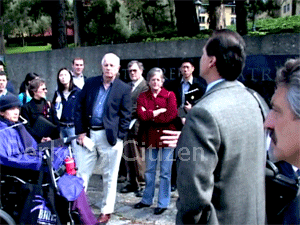 |
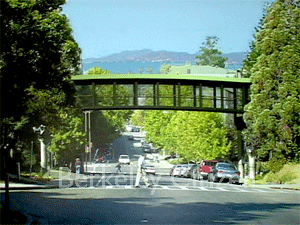 |
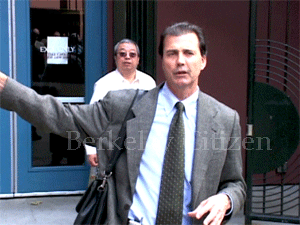 |
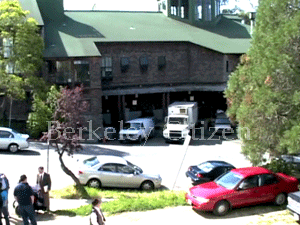 |
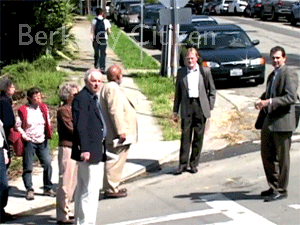 |
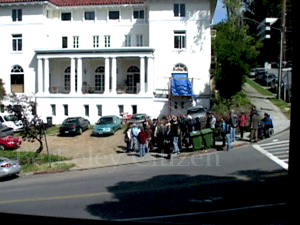 |
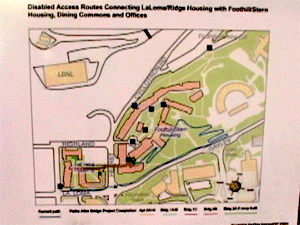 |
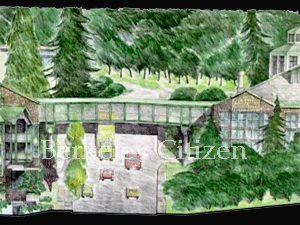 |
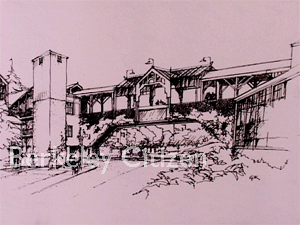 |
| Connecting Disabled Access Routes | MacDonald Architects Design 2004 | Turnbull Design 1988 (Original Proposal) |
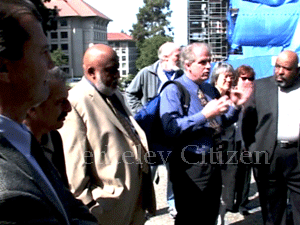 |
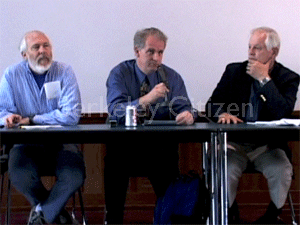 |
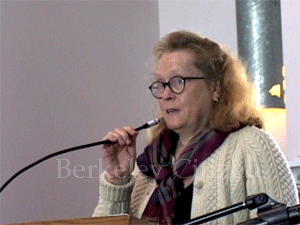 |
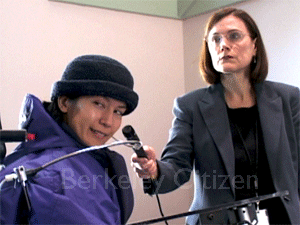 |
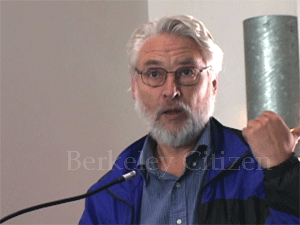 |
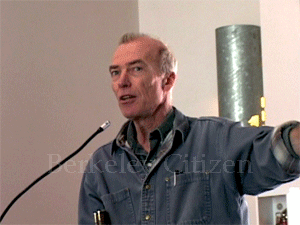 |
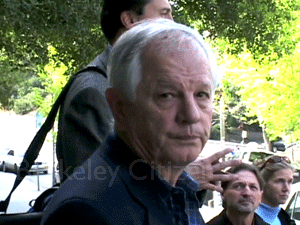 |
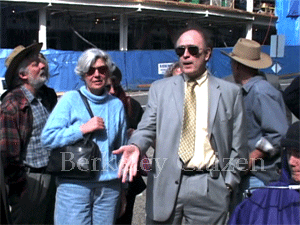 |
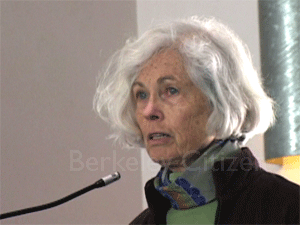 |
|
BACKGROUND (Source: From the Office of the President to the members of the Committee on Finance. regarding authority to agree to defend and indemnify the city of Berkeley against any litigation arising from approval of an encroachment permit for Foothill Pedestrian Safety Bridge, Berkeley Campus September 22, 2005)
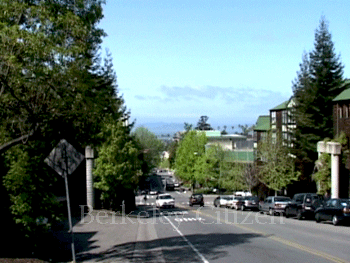 The Foothill Housing Complex, 2700 Hearst Avenue, Berkeley campus, includes housing for 345 students in 38 units north of Hearst Avenue, and 429 students in 43 units south of Hearst Avenue. Dining commons, a study lounge, and mail facilities are located south of Hearst Avenue. The Foothill Pedestrian Safety Bridge, part of the Foothill Housing Complex as originally designed and approved by The Regents in 1988, would connect these two sections of the complex, providing all-weather, ADA-compliant access between living units and to amenities across Hearst Avenue.
The Foothill Housing Complex, 2700 Hearst Avenue, Berkeley campus, includes housing for 345 students in 38 units north of Hearst Avenue, and 429 students in 43 units south of Hearst Avenue. Dining commons, a study lounge, and mail facilities are located south of Hearst Avenue. The Foothill Pedestrian Safety Bridge, part of the Foothill Housing Complex as originally designed and approved by The Regents in 1988, would connect these two sections of the complex, providing all-weather, ADA-compliant access between living units and to amenities across Hearst Avenue.
The Berkeley campus first filed an encroachment permit application with the City of Berkeley in1988. At that time, the city manager wrote to the campus indicating that the bridge concept was acceptable to the City. Construction documents were completed, but the City requested that the campus retract the application because of community controversy over the design. The campus filed a second application in October 1992 and withdrew it in May 1993. The campus engaged in further design work and obtained additional community input in 1998 and 1999.
The campus redesigned the bridge to address community concerns regarding seismic safety, bulk, opacity, and risks due to thrown objects, and filed a third encroachment permit application in February 2003. In 2003 and 2004, the re-designed bridge and encroachment permit were supported by the City of Berkeley Commission on Disability and the Planning Commission. The Landmarks Commission, Public Works Commission, and Design Review committee (a sub-committee of the Zoning Adjustments Board) were opposed to them.
The Berkeley City Council scheduled the encroachment permit for a hearing in July 2004 after commission review and community meetings on the project. In April 2005, the City Council met at the Foothill Complex for a site tour and a public hearing. The council approved the encroachment permit by a 6 to 3 vote on April 26, 2005, conditioned upon design modifications to be approved by the Public Works Director in consultation with the Design Review Committee and on an agreement by the University to defend and indemnify the City from and against litigation arising from the City’s approval of the permit. The City has since received communication regarding the permit approval from an attorney representing New Education Development Systems Inc., owner of 2717 Hearst Avenue.
Neighbors Oppose UC’s Latest Foothill Bridge Plan
By Matthew Artz, Berkeley Daily Planet, April 2, 2004
After 16 years, four aborted attempts to win city approval and $600,000 lost, the design of UC Berkeley’s proposed Foothill Bridge across Hearst Avenue has changed dramatically—but not the opposition from neighbors.
UC Berkeley is making what university Environmental and Long Range Planner Dave Mandel has said is likely its final push to connect the two halves of its Foothill Housing complex with a pedestrian bridge. The dorms themselves were first approved in 1988, with the bridge included in the original design.
Mandel told participants at a Tuesday community forum on the project that the bridge would give dorm residents a safe passage across the hectic intersection at Hearst and Highland Street and provide access for wheelchair bound students currently shut out of the La Loma dormitory on the north side of Hearst.
For most of the 350 students living in La Loma, the bridge would only shave about 50 yards off their 650-foot walk across Hearst to the Foothill dormitories where their mail boxes and dining commons are located. But for students in wheelchairs, those services are a world away. Because the terrain around the dorms is so steep, the only path to the mail boxes flat enough for wheelchair riders takes them on a half-mile journey all the way to the Greek Theater and around the complex.
Not surprisingly, said Larry Wong, manager of the Foothill complex, no wheelchair-using students live in La Loma’s 12 wheelchair accessible units.
The university has no shortage of disabled accessible housing units, but that wasn’t the point, said the Vice Chancellor for Resident and Student Service Programs Harry Le Grande. “What we want to do is make it accessible. If they want to live here they should be able to.”
While the university originally pitched the bridge as a safety benefit for all residents, UC Planner Mandel said its chief concern is now access for the disabled. He said UC fears that a student could sue the university for denying access to a public building in violation of the Americans With Disabilities Act.
Neighbors didn’t buy any of the university’s arguments.
“If they’re seriously concerned about access for the disabled, they’d make the buildings more accessible,” said Chris Scott, an architect who worked on the design of UC Merced. Scott insisted that even with the bridge, disabled students would have limited access to the dormitory.
Scott said many neighbors remain unsympathetic to the university’s argument for wheelchair accessibility because in 1988 they urged UC to build the dorm on the south side of campus on Bancroft Way and Fulton Street, where the Tang Medical Center is now situated. That location, Scott said, would have offered far better access to students in wheelchairs than the steep slopes of Hearst.
The opinion of neighbors like Scott carry extra weight for this project because the university needs an encroachment permit from the City Council to build a bridge across the public right-of-way.
The last three attempts to do so never made it to the council floor. In 1988, 1992 and 1998 the university offered different variations of a massive Bay Region style structure that boasted a slanted roof and wooden pillars, but few supporters.
Neighbors said it would obstruct their views of the Bay, the Landmarks Preservation Commission opposed it 1988 and again in 1998 on grounds that it would obstruct the view of the national landmark Phi Delta Theta House at 2717 Hearst Ave. (now occupied by the Berkeley Family Church), and the Lawrence Berkeley Laboratory feared it would collapse in an earthquake and block their passage for emergency vehicles.
The new scaled back design proposes a steel and wood structure suspended 21 feet off the ground, measuring 11 feet tall, with a slightly arched green top and bottom. The design was developed by Riyad Ghannam of MacDonald Architects
Lawrence Berkeley Lab backs the new design, which Ghannam says is more seismically sound than the previous versions. Berkeley Design Review lambasted the plan, however, according to Mandel. “They called it boring, ugly and too simplistic,” he said.
At the meeting, neighbors didn’t focus on the design of the bridge as much as its symbolism. “We’re getting more and more institutionalized and I see this bridge as one more move to intrude on this fragile residential neighborhood,” said neighbor Daniella Thompson.
The north side of campus and surrounding blocks have seen several new construction projects over the past decade. A decade after UC built Soda Hall on the north side of Hearst, the university is now breaking ground on Stanley Hall, a four-story building on the southside of Hearst. UC also continues work on the North East Quadrant Science and Safety Project.
Roger Van Ouytsel, another neighbor, said his problem wasn’t with the bridge so much as with the university building projects that only serve students. “If the university wants to spend more than a million dollars it should spend the same amount to improve our neighborhood and improve the traffic which it is responsible for,” he said.
Vice Chancellor Le Grande never imagined the bridge would end up costing so much. Had the university won approval for the bridge in 1988, the project would have cost $400,000, he said. So far, UC has spent $600,000 on various bridge designs, Mandel said, and would need to spend another $600,000 to build the bridge. The money, he said, would come from the original $65 million bond that funded the housing complex.
If approved by the City Council, Project Manager Valarie Neumann said the bridge would be assembled off-site and could be attached to the buildings in one work day.
The university is partnering with the city to improve pedestrian safety at several intersections along Hearst, said Peter Hillier, the assistant city manager for transportation. He said projects are in the works for the intersections at Oxford Street, and at Arch and Leconte streets.
Councilmember Gordon Wozniak, who represents the district that encompasses the Foothill Dorm, empathized with the concerns of the neighbors at the meeting, but said he was leaning towards supporting the bridge. “It sounds like the bridge will allow disabled students access to different parts of the complex and also allow safer crossing for students,” the councilmember said. “That’s a plus.”
Students were divided on the issue. Pammy O’Leary, a resident advisor at Foothill said despite the many hills, a bridge would make living in La Loma useful for a wheelchair-using engineering student, because most engineering classes are close to the dormitory.
Scott Baker a freshman at La Loma, doubted students using wheelchairs would want to live in a dormitory so high in the hills. “I’m sure the money could go to something more useful,” he said.
Council OKs UC Bridge Plan, Demands Higher Sewer Fees
By Matthew Artz Berkeley Daily Planet, April 29, 2005
Shortly after the clock struck midnight Wednesday, the City Council breathed new life into a pedestrian bridge proposed to rise 21 feet above Hearst Avenue.
By a 6-3 vote (Wozniak, Spring and Olds, no) the council gave UC Berkeley conditional approval to build the bridge connecting dormitories at the Foothill Housing Complex. But before the council relinquishes the city’s air rights over Hearst Avenue, it is demanding that the university indemnify the city against a lawsuit threatened by a local property owner opposed to the project.
The council rejected a second proposed condition: to lease the air rights to the university only at a yet-to-be-determined fair market price. The council also voted Tuesday to raise taxpayers’ sewer fees by 3 percent and to charge UC Berkeley sewer fees based on usage instead of accepting the current flat fee. UC has argued that it’s not legally required to pay the full cost of its sewer use.
In other matters, the council overturned the structure of merit designation of Celia’s Mexican Restaurant, a building at Fourth and Addison streets which is scheduled for demolition to make way for a new condominium project. The council also requested that the school district hold off on choosing a new site for the city’s warm water pool.
Additionally the council held a two-and-a-half hour public hearing on cuts in funding for community agencies. The agencies brought so many of their clients and supporters to the meeting that at one point while the council was in session more than 100 people, denied entry to the capacity-filled chambers, clamored outside Old City Hall.
Foothill Bridge
The council vote to allow the bridge was a split decision for UC Berkeley. The university has sought city permission for the air rights over Hearst Avenue at La Loma Avenue for nearly 20 years, contending that it wants to improve pedestrian safety for students and improve access to the La Loma dormitory on the north side of Hearst for disabled students.
The university has agreed to pay Berkeley $200,000 for the right to build over a city street, and to ask the city to approve the bridge design. UC Berkeley planner Jennifer Lawrence said the university would probably have to ask the UC Regents for authority to repay the city for any losses which result from lawsuits now threatened against the proposed bridge. A possible plaintiff is New Education Development Systems, Inc, an organization with ties to the Unification Church headed by Rev. Sun Myung Moon, which owns a landmarked building at 2717 Hearst Ave., just uphill from the proposed bridge.
The group’s attorney, Alan Seher, said that the university did not legally qualify for the encroachment permit under city law because it would not be “substantially damaged” if the city refused. On the issue of whether UC Berkeley had adequately studied alternatives to the bridge, he said that he’d found information that the university had a network of underground tunnels, including one under Gayley Road adjacent to the Foothill complex.
Seher said that even though the council attached a condition to the permit, the vote triggered a 90-day window for his client to file suit against the city independent of the UC Regents’ vote on whether to indemnify the city.
“The city I don’t think was thinking very clearly when they voted to demand the university to indemnify them,” he said, explaining that if the UC Regents declined the city could still face a lawsuit.
UC students in attendance supporting the bridge plan cheered the council vote. Councilmember Gordon Wozniak, the council’s biggest proponent of the bridge, was resolutely against adding the indemnification clause and stormed out of the council chambers after the vote. He did not return for the remainder of the meeting.
Also dissatisfied with the vote was Jim Sharp who lives near the proposed bridge site and has opposed the project.
“The council is still giving [the air rights] away,” he said. “Had they gotten a bigger pot of money then maybe there would be some justice to this.”
With only four votes in favor, the council failed to pass a proposal from Councilmember Kriss Worthington to add a second condition to the variance ordering UC Berkeley to pay an undetermined fair market value for the air rights over Hearst. Joining Worthington in support of the proposal were councilmembers Dona Spring, Betty Olds and Max Anderson.
“I think this is a joke that we’re going to get a measly $200,000 and then we’re going to get sued,” Olds said, directing her anger at UC officials. “I can’t believe what a bunch of namby pambies you all are.”
But City Manager Phil Kamlarz said that it would be difficult to assess the fair market value of air rights.
Councilmember Linda Maio said charging fair market value for the rights might be too big a burden for the university.
“We don’t want to have so many conditions that we’re denying it,” she said.
All Rights Reserved
